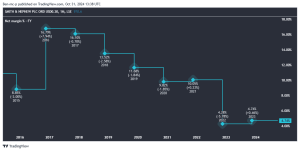This article is reprinted by permission from NextAvenue.org.
Aging in place can be challenging for many older adults, no matter where they live, but is especially daunting for those living in rural areas.
“Housing stock tends to be older and of poorer quality, there is less access to healthcare and those in rural areas are generally lower-income,” says Carrie Henning-Smith, an associate professor at the University of Minnesota School of Public Health and deputy director for the school’s Rural Health Research Center.
The University of Minnesota Rural Health Research Center recently conducted an environmental scan on statewide-age friendly initiatives for aging in place (which is the ability to stay in your own home as you age). It focused on transportation, provider training and education, workforce development and dementia-friendly and underserved communities.
The scan identified 33 statewide aging in place or age-friendly initiatives in 22 states that support independence as people age. Of those 33, only six focused explicitly on rural communities or included rural communities in one of the priority areas. They include:
“We were a little surprised by the results. States have a responsibility to support everyone,” says Henning-Smith. “Many areas are probably doing good by rural adults, but we found only six with the explicit rural focus.”
Aging in place especially important for rural communities
Erica Husser, project director for Age Friendly Care PA at the Penn State College of Nursing in State College, Penn., says aging in place is typically less costly than assisted living, and the familiarity of the older adults’ homes typically makes it a safer option. “Most older adults just want to stay in their homes,” says Husser.
“When comparing the rural lifestyle with others, being a part of a rural community for many older adults is who they are,” says Husser. “To take those people away from the landscape to urban areas, where there are few green spaces and trees, is a very different way of life.”
Also see: In debt and retired? How to pay it off – or keep it, if you can
Moving older adults from their rural or small-town homes, where they likely have lived for decades, raised their families and likely are still a part of their towns, can not only tear the fabric of the community apart, it can lead to depression, health problems and a higher mortality rate.
Linda Clark, community and development director for the Verde Valley Caregivers Coalition, which serves the rural areas and small towns in the Verde Valley region of Arizona, says they’ve noted anecdotally, when people are moved to senior living centers, they tend to die within one to two years. “If they can stay in their homes, they typically [live] three to five years longer,” says Clark.
Initiatives focus on well-being
Age Friendly Care PA works in partnership with geriatric centers, healthcare organizations, primary care providers, students studying careers in healthcare, and community organizations to improve the care of older adults and those living with dementia in rural and underserved communities in Pennsylvania.
“We’re here to train everyone who [works with] older adults, from student nurses to the doctors,” says Husser. To that end, they work with partners to identify older adults through screenings and connect them with the right services.
Read:5 questions to ask yourself if you’re aging alone
The programs, which focus on ensuring clients receive adequate, focused healthcare, has a mission of narrowing down what matters, including medication, mentation (emotional and mental health) and mobility. The 4 M’s as they are known, were devised by the John A. Hartford Foundation and serve as a framework for age-friendly care.
“It’s the idea of practice as a set with these four M’s,” says Husser. “It improves healthcare and provides a better quality of life.”
Connecting older adults in rural areas with the right services isn’t always easy. “There’s a lot of mistrust with healthcare and the government,” says Husser. Still, her program reached 70,000 adults in 2020.
Verde Valley caregivers have a broad focus
The Verde Valley in Arizona claims a population of 58,835, but the vast region comprises small towns with typically less than 1,000 residents, and people who live on the outskirts of those towns, says Clark. Flagstaff is the nearest city, about 40 minutes from the area and roughly two hours north of Phoenix.
“We’ve had people retiring here for years and because they’re from other areas, their children and families are typically out of state,” explains Clark.
The pandemic left this population especially vulnerable to isolation and loneliness, some of them not even being able to access healthcare. “If they can’t drive, they’re just stuck, regardless of income,” Clark says when describing the rural region.
Clark says transportation is her organization’s biggest service, providing rides to doctors, physical therapy and other medical appointments or to pick up prescriptions or take people to the grocery store.
Don’t miss: I lost my job at 58. Here’s how I was able to get by until retirement
Clark says a recent survey showed 88% of their clients reported missing one or more healthcare appointments prior to signing up for services; 98% of clients said they could keep their appointments after signing up.
The programs through Verde Valley Caregivers provide several services, including the Guardian Angel Emergency Alert Program, which loans emergency alert devices to low-income adults at risk of falling.
Its Pets Count Too! Program aids clients’ pets including veterinary care, vaccinations, medications, food and even boarding a pet if the client is temporarily hospitalized or sent to rehab. The Tech Coaching Program helps adults stay connected with family and friends by teaching them how to use their cellphones, tablets and computers.
“Because so many of our clients have family living out of state, pets help with loneliness and depression,” says Clark. “And because so many live out of state, [families] were sending our clients devices, which is great, but many of our clients didn’t know how to set up or use them.”
One of its most successful programs in the past year has been the vaccination program, which allowed 400 clients to receive COVID-19 vaccines in their homes and got 600 more people to appointments for vaccines. Clark says the program is ongoing, now focusing on boosters.
She notes that the total number of people served is an ever-changing moving target. “We lose 300 to 400 per year, but there’s always new clients to take their place,” says Clark. “We’ve enrolled 600 new clients since January 2021.”
Read next: The No. 1 thing that can improve the retirement security of older workers
Kent Ellsworth, its executive director, says, “Our seniors want to do what they can to stay living in their community of choice. We can expect to serve more people than ever before who need our help.”
Kerri Fivecoat-Campbell is a full-time freelance writer and author living in the Ozark Mountains. She is the founder and administrator for the public Facebook page, Years of Light: Living Large in Widowhood and a private Facebook group, Finding Myself After Losing My Spouse, dedicated to helping widows/widowers move forward.
This article is reprinted by permission from NextAvenue.org, © 2022 Twin Cities Public Television, Inc. All rights reserved.
More from Next Avenue:
This post was originally published on Market Watch






